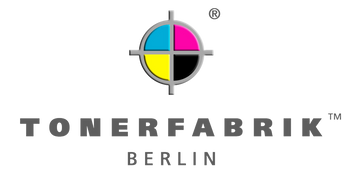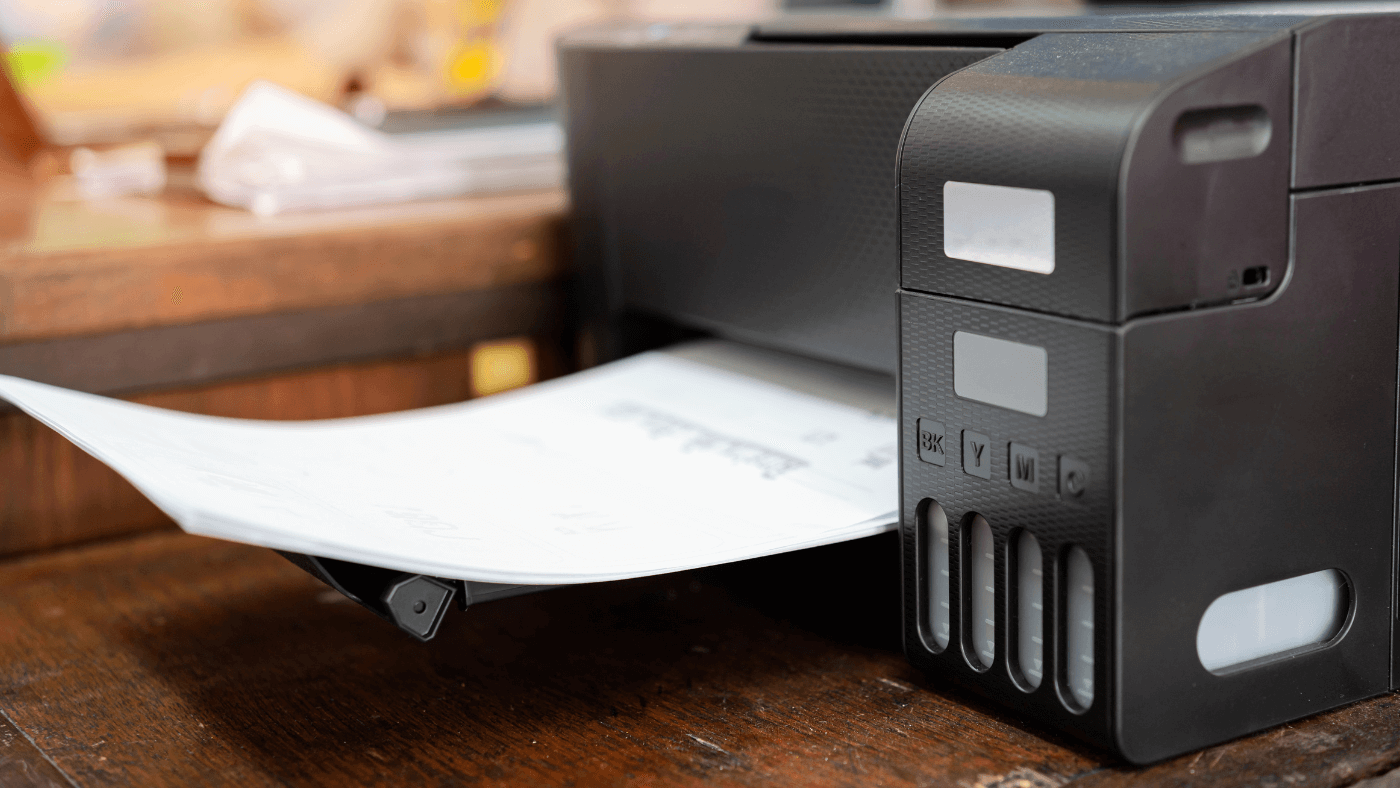Choosing the right printer for your needs
Choosing the right printer is crucial to meeting your specific needs, whether for home use, office use, or specialized printing tasks. The technology behind printers has evolved significantly in recent years, and there are various options available, each with their own advantages and disadvantages.
Differences between inkjet and laser printers: A comparison
Inkjet printers are known for their ability to produce high-quality color prints, particularly photos and documents with rich gradients. They are ideal for home use or small offices where printing photos or colored documents is often required. Inkjet printers use liquid ink that is sprayed onto paper, resulting in vibrant colors and high levels of detail. However, operating costs can be higher due to the expensive ink cartridges, especially when printing a lot.
Laser printers, on the other hand, are known for their speed and efficiency, especially when it comes to printing large quantities of text documents. They use toner instead of ink, resulting in a lower cost per page. Laser printers typically offer faster printing speeds than inkjet printers and are ideal for office environments where large batches of documents are regularly printed. Although the initial cost of a laser printer may be higher, the long-term running costs are often lower.
1.2 Understand connection options: USB, WiFi, Ethernet
The way your printer connects to devices can significantly impact its usability. USB printers are easy to install and require a direct connection to the computer, making them a good choice for individual users.
Wi-Fi printers offer more flexibility because they can be wirelessly connected to multiple devices on the same network. This allows printing from anywhere in the home or office without a physical cable connection.
Ethernet printers connect to the network via a LAN cable and are ideal for office environments where a stable and secure connection is required. They also support printing from multiple devices, but don't offer the same flexibility as WiFi printers in terms of placement.
The importance of print speed and quality
Print speed , often measured in pages per minute (ppm), is an important factor for office environments where efficiency is critical. Laser printers are generally faster than inkjet printers in this regard.
Print quality is especially important when it comes to printing photos or marketing materials. Inkjet printers generally offer higher quality with better color fidelity and higher resolution.
When choosing the right printer, you should consider your specific needs, including the type of documents you want to print, the amount of printing, and preferred connection options. By weighing these factors, you can make an informed decision that best suits your needs.
Unpack and connect the printer successfully
Getting started: Unpacking and preparing your printer
Unpacking and preparing your new printer is an exciting moment, but it should be handled with care to avoid damage and ensure correct installation.
-
Opening the packaging : Start by carefully opening the packaging. Manufacturers often package printers in protective materials such as foam or plastic to prevent damage during shipping.
-
Removing shipping guards : Printers ship with shipping guards that protect moving parts during shipping. This may include adhesive strips, foam blocks or plastic clips that must be removed before use.
-
Checking the scope of delivery : Make sure that all parts listed in the manual are present. This usually includes the printer itself, a power cable, possibly a USB cable, the installation CD with drivers and boot cartridges or toner.
-
Choosing a suitable location : Choose a stable, level surface near a power outlet and, if necessary, within easy reach of your computer or wireless router.
Supply power to the printer and turn it on
After unpacking the printer and removing all shipping locks, it's time to power it up and turn it on.
-
Connecting the power cable : Connect the power cable to the printer and plug the other end into an electrical outlet. Make sure that the plug is secure and that the cables are not kinked or damaged.
-
Turn on the printer : Press the power button on the printer. On most models this is located on the front or top of the device. After switching on, many printers automatically carry out a self-test and, if necessary, calibrate themselves.
-
Installation menu : Depending on the printer model, an installation menu may appear on the printer display after switching on. This menu can guide you through initial steps such as installing ink cartridges or toner and setting up a Wi-Fi connection.
-
Waiting to Ready : After the initial setup process, the printer may need a few minutes to prepare for the first print job. Wait until the printer indicates that it is ready before continuing.
By carefully following these steps you will ensure that your printer is safe and correctly prepared for further installation and use. The next step involves installing the driver software, which is essential for communication between the printer and computer.
Install Driver Software: A Critical Step
Installing the correct driver software is a crucial step in ensuring that your printer can communicate correctly with your computer. There are two main ways to install drivers: via the included CD or by downloading from the manufacturer's website. Both methods have their advantages and disadvantages, and the best choice may vary depending on your specific situation.
Driver software installation: CD vs. online download
CD installation:
-
Pros: Installing from the included CD is often the easiest and quickest way to set up your printer, especially if you don't have instant Internet access. The drivers on the CD have been designed and tested specifically for your printer model.
-
Cons: One downside to installing from a CD is that the drivers may not be up to date. Software and driver updates are released periodically to provide performance improvements or fix known issues.
Online download:
-
Pros: Downloading the latest drivers directly from the manufacturer's website ensures you get the most up-to-date software with the latest improvements and bug fixes. This is especially important if your printer was updated after the CD was produced or if you are using an operating system that was updated after the CD was created.
-
Cons: The main disadvantage of online downloading is that you need an internet connection. Additionally, some users may find it more difficult to find the correct driver on the website, especially if they are unfamiliar with navigating manufacturer websites.
Selecting and downloading the right driver for your operating system
It is important to choose the specific driver for your computer's operating system, be it Windows, macOS or another operating system. Here are some steps to help you find and install the right driver:
-
Visit the printer manufacturer's official website : Find the support or download section, usually found in the menu or at the bottom of the page.
-
Model Search : Enter your printer model in the search box. This should take you to a page with all available drivers and software for your specific model.
-
Select operating system : Select your operating system from the drop-down list. Make sure you select the correct version (e.g. Windows 10, macOS Catalina).
-
Download and Installation : Download the recommended driver software and follow the installation instructions. This may include running an installation file and following on-screen instructions.
By carefully selecting and installing the right driver software, you will ensure that your printer functions optimally and you get the best possible performance from your device.
Setting up a network printer: connection options
Connect Wi-Fi printer to the network
To connect a printer over Wi-Fi, you either need your network's WPA key or, if the printer and router support WPS, you can connect by pressing the WPS button on both devices. The printer then automatically receives an IP address from the router.
Use of Ethernet connections for network printers
Ethernet printers are connected directly to the router with a LAN cable. This method is ideal for environments that require a stable and fast connection, such as offices.
Ensuring a stable network connection
Regardless of the connection type, it is important to ensure a stable network connection. Make sure your printer is positioned in a good reception area and check network settings to avoid connectivity issues.
By following these steps, you can ensure that your network printer is properly configured and provides a reliable connection for printing over the network.
Add the printer to your computer
Instructions: Add a printer in Windows
To add a printer in Windows, open Settings, navigate to Devices, then Printers & Scanners. Click "Add a printer or scanner" and Windows will begin searching for available printers. Select your printer from the list and follow the installation instructions.
How to add a printer on a Mac
On a Mac, open System Preferences and select Printers & Scanners. Click the plus sign to add a new printer. Your Mac searches for available devices; select your printer from the list and follow the installation instructions.
Check: Is the printer installed correctly?
To check whether the printer is installed correctly, send a print job to the printer or print a test page directly from your operating system's printer settings. Successful printout confirms correct installation.
Print test page
Carrying out the pressure test
Performing a print test is a straightforward process that is critical to verifying your printer's connectivity and print quality. In most operating systems, you can print a test page from the Control Panel or Printers and Scanners settings. This step is especially important after a new installation or configuration change to ensure that the printer is communicating correctly with your computer.
Evaluation of print quality
Evaluating the print quality of a test page includes checking for clarity, color fidelity, and the absence of streaks or other defects. Pay attention to the sharpness of the text and the saturation of the colors. Irregularities may indicate problems with the printhead or ink cartridges. A good test page should show clear, sharp text and vibrant colors with no visible defects.
Troubleshooting test page issues
If you encounter problems with the test page, there are several troubleshooting steps. First, check the ink or toner cartridge levels and ensure that all cartridges are installed correctly and there is enough material for printing. If the quality is poor, perform a printhead cleaning, which can usually be initiated via the printer software. Also check the printer settings to ensure the correct paper size and print quality are set. If problems persist, consult the printer manufacturer's support pages or contact customer service for more specific solutions.



